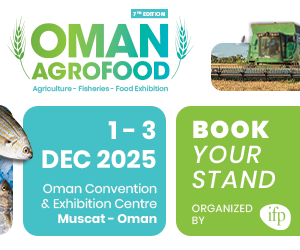A recent report by the Food and Agriculture Organization (FAO) has brought to light troubling rates of agricultural land degradation, especially within the Arab region. According to the study, over 46 million hectares—equivalent to two-thirds of the 70 million hectares degraded by human activity in the region—face significant risks. Published in the MDPI journal Agriculture, the report underscores an urgent call to rehabilitate degraded lands to strengthen food security.
Globally, FAO estimates that 1.66 billion hectares have been degraded by human activities, with more than 60% of this affecting agricultural areas such as croplands and pastures. As 95% of the world’s food production relies on land, this level of degradation presents serious threats to the stability and sustainability of agrifood systems.
The report advocates for integrated strategies aimed at preventing, mitigating, and reversing land degradation. It calls for sustainable management of soils, land, and water resources, and urges the international community to make agrifood system transformation a priority in order to achieve land degradation neutrality (LDN), enhance productivity, protect biodiversity, and address climate change impacts.
Key findings include:
The Arab region shows particularly severe degradation trends, with cropland highly exposed to risk. Major contributing factors include excessive fertilizer and pesticide application, soil salinization caused by irrigation, more frequent sand and dust storms, rising temperatures, and worsening water scarcity linked to climate change.
Currently, less than 4% of degraded land in the Arab region has been earmarked for restoration, falling behind global commitments. Restoring 26 million hectares of degraded cropland could potentially cut the yield gap by as much as 50% for oil crops, while allowing cereals, roots, and tubers to approach optimal yields.
The findings highlight the urgent need for a dedicated regional initiative to coordinate action among countries, adapt interventions to local contexts, and accelerate efforts to restore agricultural lands. Such action would bolster food security, alleviate poverty, and build resilient, sustainable agrifood systems.
Building on existing momentum—including the Riyadh Action Agenda announced at the United Nations Convention to Combat Desertification (UNCCD) COP16 in December 2024—the proposed initiative aims to drive progress in land restoration, strengthen drought and water resilience, and promote sustainable agrifood systems to prevent further degradation.
FAO’s Initiatives Against Desertification and for Ecosystem Restoration in the Arab Region
The Arab region remains particularly vulnerable to the impacts of desertification, land degradation, and drought. During COP16—hosted in the Arab region for the first time—FAO underscored that restoring degraded agricultural land is essential to transforming agrifood systems and ensuring food security. This perspective contributed to the adoption of the landmark UNCCD Decision 19/COP.16 on avoiding, reducing, and reversing the degradation of agricultural lands and soils.
FAO also spearheads the NENA Regional Investment Framework for Ecosystem Restoration and Development Solutions, developed in partnership with UNEP, UNCCD, and the League of Arab States. This framework encourages “champion countries” to lead large-scale restoration efforts across the region.
Additionally, FAO introduced the Suitability Crop Platform, an innovative tool that provides crucial data on soils and crops to inform sustainable agricultural planning. These actions are part of a broader effort to embed land restoration into national policies, improve resilience to climate change, and support biodiversity and livelihoods in the drylands of the Arab region.
Source: FAO



















































































